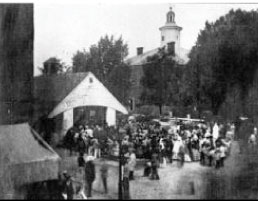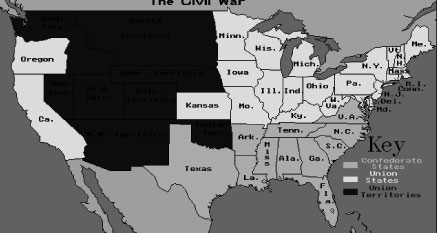Slavery in North America 1654-June 19, 1865?
Four hundred years ago, in 1607, Jamestown, VA, the first permanent settlement by Europeans in North America was founded. In 1610, John Rolfe introduced a strain of tobacco which quickly became the colony’s economic foundation. By 1619, more labor was needed to support the tobacco trade and “indentured servants” were brought to the colony including about 20 Africans. As of 1650, there were about 300 "Africans" living in Virginia, about 1% of an estimated 30,000 population. They were still not slaves, and they joined approximately 4000 white indentured "servants" working out their loans for passage money to Virginia. They were granted 50 acres each when freed from their indentures, so they could raise their own tobacco.
Slavery was brought to North America in 1654, when Anthony Johnson, in Northampton County, convinced the court that he was entitled to the lifetime services of John Casor, a Black man. This was the first judicial approval of life servitude, except as punishment for a crime. Anthony Johnson was a Black man, one of the original 20 brought to Jamestown in 1619. By 1623, he had achieved his freedom and by 1651 was prosperous enough to import five "servants" of his own, for which he was granted 250 acres as "headrights".
 |
|
|
Slave sale in Maryland. |
However, the Transatlantic slave trade from Africa to the Americas had been around for over a century already, originating around 1500, during the early period of European discovery of West Africa and the establishment of Atlantic colonies in the Caribbean and South and North America when growing sugar cane (and a few other crops) was found to be a lucrative enterprise. Slaves were usually captured by African tribes in raids or open warfare or purchased from other African tribes. Many tribes were happy to get rid of their enemies by capturing and selling them for trade goods--usually whiskey, swords, guns and gold. It is believed that about 11 million men, women and children were transported in ships across the Atlantic to various ports in the Americas, mostly to Brazil and the islands in the Caribbean from 1500 to 1850.
The importation of slaves into the United States was banned in 1808, by which time between 300,000-500,000 had been imported. Subsequent slaves were nearly all born in the United States. By 1800, nearly all slavery in non-southern states had been banned, with Vermont being the first state to do so in 1791.
However, conditions were unconscionable. Between 1700 and 1865 there were very few real restrictions of the conduct of a master toward his slave, except those that flowed from what, at the time, would be considered "Christian decency", and social norms.
Around 1750, Quakers began to fight for the abolition of slavery. Beginning around 1825, slaves and White abolitionists, began to gain ground in their struggle for independence. Slaves in the United States who escaped ownership would often make their way north with White and Black abolitionist support to the northern part of the country or Canada through what became known as the "Underground Railroad". The Russell House, here at Wesleyan was one stop on the “Railroad.” Famous active abolitionists of the U.S. include William Lloyd Garrison, Harriet Tubman, Nat Turner, Frederick Douglass and John Brown.
 |
|
|
Map of the Union vs. Confederate States |
The American Civil War began in 1861 when eleven southern states declared their secession, largely over the question of abolition. At first, Abraham Lincoln reversed attempts at emancipation by Secretary of War Cameron and Generals Fremont and Hunter in order to keep the loyalty of the border states and the War Democrats. Lincoln then tried to persuade the border states to accept his plan of gradual, compensated emancipation and voluntary colonization, while warning them that stronger measures would be needed if the moderate approach was rejected. Only the District of Columbia accepted Lincoln's gradual plan. Thus, on January 1, 1863, Lincoln issued the Emancipation Proclamation, freeing, at least on paper, all slaves in the United States. Slavery was constitutionally abolished by the Thirteenth Amendment to the United States Constitution in the United States in 1865, freeing over 4 million slaves. The Civil War resulted in the loss of about 600,000 lives.
On June 19, 1865, also known as Juneteenth, Union General Gordon Granger and 2,000 federal troops arrived on Galveston Island, Texas to take possession of the state and enforce former slaves’ new freedoms. It is believed that this was the last place in the United States to receive the news of the Emancipation Proclamation, two and half years after it was made.
